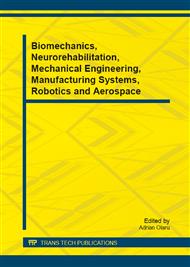p.39
p.45
p.57
p.63
p.68
p.74
p.80
p.85
p.90
Evaluation of Surface Roughness Variations of Solid Dosage Forms in Simulated Physiological Conditions
Abstract:
Rehabilitation of joints that underwent major surgery, involves reducing postoperative pain and inflammation. Many pharmaceutical product used in reducing joint pain are based on the extended-release technology and becoming increasingly important in research domain. The performance of extended-release matrix tablets is dependent on the solid dosage properties like matrix materials used, which are semi-synthetic polymer like hydroxypropyl methylcellulose (HPMC) and sodium carboxy methylcellulose (Na CMC). Depending on the properties of the polymer used, drug release from the tablets may be controlled by erosion mechanism and surface roughness. In a physiological environment, the release of drug from a solid dosage form requires a gradual erosion of solid shape with simultaneous change of surface roughness. This paper presents the influence of surface erosion of solid dosage forms on the surface roughness and the release of the analgesic and anti-inflammatory substances in a biological environment similar to the human digestive juice.
Info:
Periodical:
Pages:
68-73
Citation:
Online since:
December 2012
Keywords:
Price:
Сopyright:
© 2013 Trans Tech Publications Ltd. All Rights Reserved
Share:
Citation:


